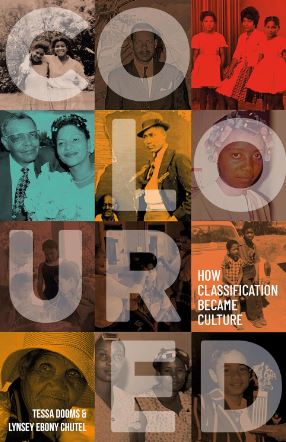Whiteness: Deconstructed
Part 2: The Political Instabilities of Whiteness
In the second part of Afropean’s series of essays on whiteness, this section will assess which groups have been included and excluded in the category of whiteness at different historical junctures, and why, showing how instabilities in the construction of whiteness have worked in its favour.
Despite its power, whiteness remains an unstable category in which some groups are considered more secure in their whiteness, whilst other groups have been included or excluded from whiteness at different historical junctures for political motivations. North Europeans and North Americans have remained the dominant group within the category since its inception, however whiteness as a racial category continues to be politically and temporally contingent, and this instability is a part of its inherent power.
Legal recognition of race has been historically used to segregate populations of people which has ensured power and privilege remained in white control, and, given that it is ascribed, it is the connotations of whiteness that are its greatest asset. For example, the Japanese were given the status of honorary whites in both apartheid South Africa and Nazi Germany, whereas the Irish have historically been excluded from whiteness in both the US and the UK. In the US context, WEB Dubois (1936) in Black Reconstruction in America 1860-1880demonstrates how white labourers embraced a white racial identity over class solidarity with freed black slaves to monopolise economic, social and state resources and maintain social status over blacks. Dubois posited whiteness as a ‘public and psychological wage’ that enabled poor whites to distance themselves from blacks by embracing white supremacy, enabling them to shed the stigma of a buffer racial identity; increase their social mobility; and ensure a white status for future generations who would benefit from their ability to accumulate and transfer intergenerational wealth, which was legally denied to African Americans.
This illustrates how whiteness is a historically contingent and provisional political category, which has been politically engineered to unite white ethnic groups within Western white hegemony, through a movable criterion of inclusion that is politically expedient. Other groups whose whiteness have come into question at times of political instability, repositioning whole populaces as vulnerable and insecure, include Arabs and Jews. For example, despite a 1944 US legal ruling stating that Arabs are to be considered white and therefore eligible for naturalisation in the US, this has been problematised by the post 9/11 political climate and Trump’s presidency, through a conflation of Arab as ethnicity and Islam as religion, and a conflation of Islam as a religion and terrorist organisations such as ISIS, thereby positing all Arabs as potential terrorists in the popular imaginary. Concomitantly, despite their relative position of security and power in the contemporary era, white Jews also do not constitute the cultural norm that hegemonic whiteness does, and due to a history of discrimination and racial targeting, the fear of anti-Semitism remains salient in the shaping of contemporary Jewish identity, thereby leaving them in an unstable, vulnerable position vis-à-vis whiteness. Clearly their white skin did not save European Jews from the Nazi genocide.

In other examples, France Winddance Twine’s (1996) research into mixed race youth and white women in interracial relationships also points to these instabilities. In a study of mixed race girls growing up in a highly segregated white American suburb, Winddance Twine found that a white identity was inculcated during childhood. Despite the general conception of whiteness as exclusively available to European Americans, this research shows that mixed race girls enacted white identity claims due to their status in middle and upper-class white environments, with white identities differentiated from being underprivileged and poor. This research problematizes colour as being an exclusive bar to whiteness, at least during childhood, and is evidence of the social construction of race, challenging ideas of racial fixity despite phenotypical constraints. Other examples point to mixed race girls who have grown up believing they are white because their families refuse to acknowledge their racial ancestry, for example the experience of Lacey Schwartz, who analyses this experience in her documentary Little White Lie. In another example, Winddance Twine’s research into white mothers of mixed race children in postcolonial Britain, entitled A White Side of Black Britain: Interracial Intimacy and Racial Literacy (2010), illustrates how white working-class mothers were positioned by white and black family members and the state as ‘honorary blacks’ in a process of ‘un-whitening’ due to their perceived transgressions from notions of white femininity and respectability by entering relationships and having progeny with non-whites. Often this has led to the social vilification of white mothers whose position in the dominant race is no longer secure.
Constructing whiteness as a race has therefore been deemed politically effective because appeals to common whiteness create a coalition of whiteness beyond ethnicity as distinct from other races. As Dyer attests, ‘whiteness has been enormously, often terrifyingly effective in unifying coalitions of disparate groups of people’, a phenomenon that has paradoxically been strengthened by its own instabilities:
a shifting border and internal hierarchies of whiteness suggest that the category of whiteness is unclear and unstable, yet this has proved its strength. Because whiteness carries such rewards and privileges, the sense of a border that might be crossed and a hierarchy that might be climbed has produced a dynamic that has enthralled people who have had any chance in participating in it (Dyer, 1997).
Therefore, the variable criteria of inclusion and exclusion from whiteness serves to strengthen its power, thereby supporting the maintenance of its global dominance.
In the British context, the term ethnicity in popular usage refers specifically to national or cultural origins. The reification of cultural differences has become popularised in the UK as a new form of ‘othering’ in which cultural and ethnic differences are seen to be incompatible with those of the nation-state. Despite the myriad ethnicities that are encompassed within the British Isles, Britishness has been redefined as an all-encompassing ethnic category. This can be illustrated through the changing categories in the British census. Prior to 2001, there was only one ‘white’ category, rendering invisible other ethnic white groups, such as the Welsh, Scottish and Northern Irish, a reflection of the political desire during its empire to inculcate all whites as part of the British populace. This is despite the fact that the Scottish, Welsh and Irish have been vociferously defending their rights to define themselves as separate ethnicities within the umbrella term of ‘Britishness’, as can be seen in the various attempts at national independence as a response to English imperialism and hegemony. This contemporary conceptualisation of Britishness as an ethnic category enables the concept of Britishness to be divorced from non-whites (for example, immigrants from the Commonwealth) and ensures whiteness remains a symbol of ‘authentic Britishness’. Whiteness and Britishness are therefore conflated, with all non-whites racialised as ‘other’, a form of cultural racism creating a culturally constructed form of difference.
However, although the boundaries of whiteness are far more permeable for white ethnic groups than people of colour, in the Brexit era anti-immigrant rhetoric has become more encompassing to include members of EU states who have travelled to Britain as economic migrants. In this context, these groups, despite their whiteness, are excluded from notions of Britishness, indicating racial, ethnic and cultural readings of difference that cannot be reduced to the white/non-white binary. The term ‘indigenous’ is now often deployed as a way of differentiating British-born whites from other white groups, implying that both non-whites and whites from specific European countries cannot be British.Whiteness is clearly not a homogenous identity but is both flexible and contingent, evoking new white intra-ethnic distinctions, such as that between the British working class and other newly arrived white immigrants such as the Polish, thereby indicating that the white/non-white binary is no longer as theoretically or politically salient as it once was.
Nevertheless, whiteness continues to retain its global power, partly due to its instabilities rather than in spite of them. Western elites have the power to include or exclude specific groups based on their political usefulness, in such a way that some groups benefit from their whiteness in certain contexts whereas other groups are denied this privilege. Initial attempts to inculcate all white groups during the colonial period have given way to new intra-ethnic distinctions, which exclude specific European groups, i.e. Eastern Europeans. This indicates the provisional and contingent aspects of whiteness in the contemporary era.
PREVIOUS: The invisibility of Whiteness
NEXT: Whiteness, The British Working Class and Far Right Mobilisation


